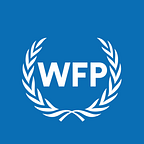Eight numbers showing how WFP is innovating to disrupt hunger
By Liam Brown
1.4 million people.
That’s a big number — about the same number of people as the country of Equatorial Guinea, the Brazilian island of São Luís, or the city of Munich, Germany. It’s also the same number of people reached in 2019 by innovations scaling up with the support of the World Food Programme (WFP) Innovation Accelerator.
We broke it down into eight numbers showing how WFP is innovating to disrupt hunger.
1)18,000: the number of people benefiting from digital skills training through WFP’s EMPACT programme. EMPACT connects refugees, displaced people and vulnerable host communities to the future of work through short and focused digital skills training courses.
2) 42,000: the number of people accessing up-to-date food prices through the Dalili mobile app, which collects and displays products, prices and promotions at local stores. People receiving WFP assistance can use the Dalili app to easily find the best prices and deals from home. Dalili will continue to scale up in Kenya and Lebanon in 2020.
3) 17,700: the number of people supported through CODA, WFP’s mobile solution to provide conditional on-demand assistance. CODA allows frontline humanitarian workers to record and track beneficiaries’ nutrition and health information, replacing error-prone paper-based registries with digital smartcards.
4) 107,000: the number of refugees receiving cash transfers through Building Blocks, WFP’s blockchain-based cash distribution system. Building Blocks provides recipients with a blockchain-based e-wallet to make cash transfers faster, cheaper and more secure. The project recently expanded to Cox’s Bazar, Bangladesh, where it’s helping to provide humanitarian assistance to Rohingya refugees.
5) 7,600: the number of people growing food through H2Grow, WFP’s hydroponics project. H2Grow enables people in harsh environments like deserts or urban slums to grow their own vegetables and fodder with no soil and 90 percent less water than traditional growing techniques. In 2020, H2Grow plans to expand to five new countries and build strong avenues for scale.
6) 52,800: the number of people receiving meals through ShareTheMeal, WFP’s fundraising app. Free to download, ShareTheMeal allows smartphone users to provide children with vital nutrition with a simple tap on their phones. It costs US$ 0.50 to feed one child for a day.
7) 526,000: the number of people reached through WFP’s post-harvest loss reduction training. This project trains smallholder farmers how to improve post-harvest handling and provides simple but effective hermetic storage equipment, helping to reduce post-harvest losses by up to 98 percent.
8) 550,000: the number of people reached through the Farm to Market Alliance, a group of public and private institutions helping smallholder farmers to move from subsistence farming to market-oriented agriculture. The Alliance allows farmers to unlock the credit, resources and services necessary to plant and harvest quality crops. Operating in Rwanda and Kenya, the Alliance plans to expand to four more countries in 2020.
Hungry for more numbers? Read our 2019 Annual Report.
The WFP Innovation Accelerator sources, supports and scales high-potential solutions to end hunger worldwide. We provide WFP staff, entrepreneurs, start-ups, companies and non-governmental organizations with access to funding, mentorship, hands-on support and WFP operations.
Find out more about us: http://innovation.wfp.org
Subscribe to our e-newsletter
Follow us on Twitter and LinkedIn and watch our videos on YouTube
